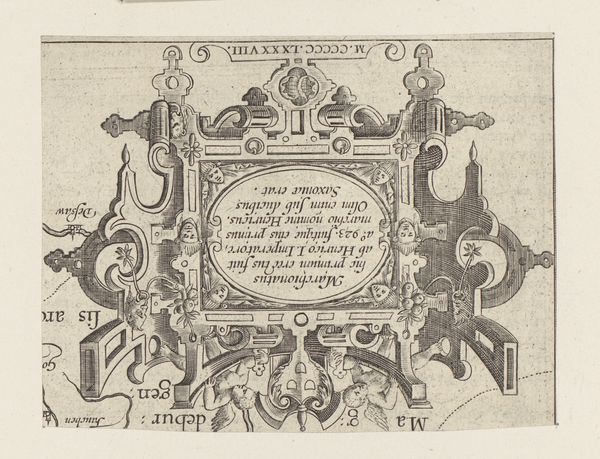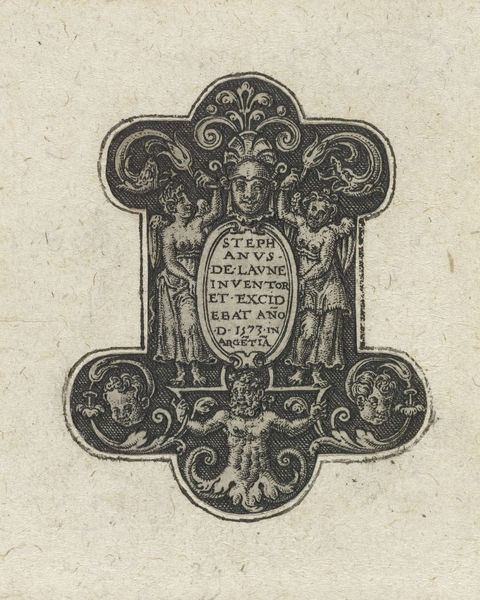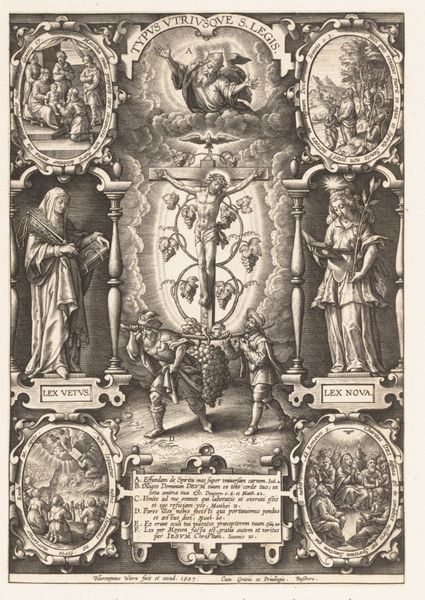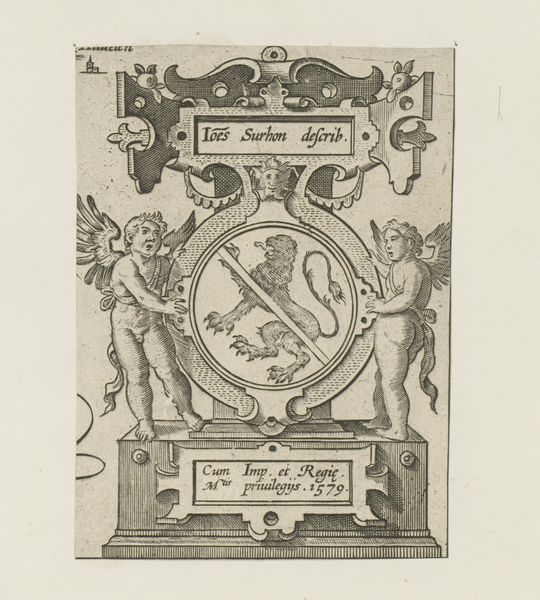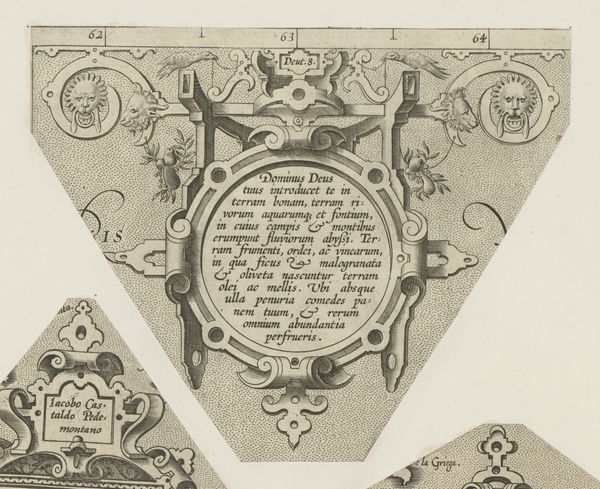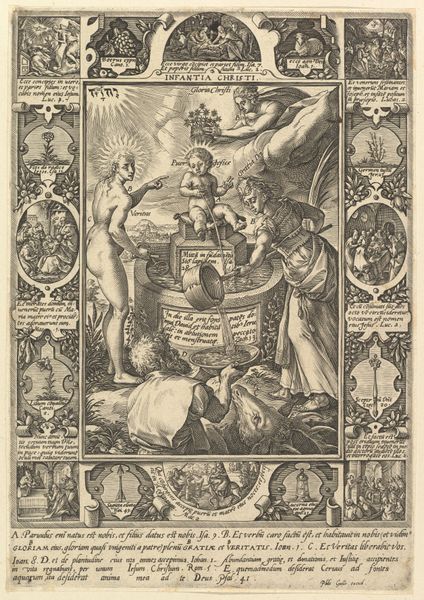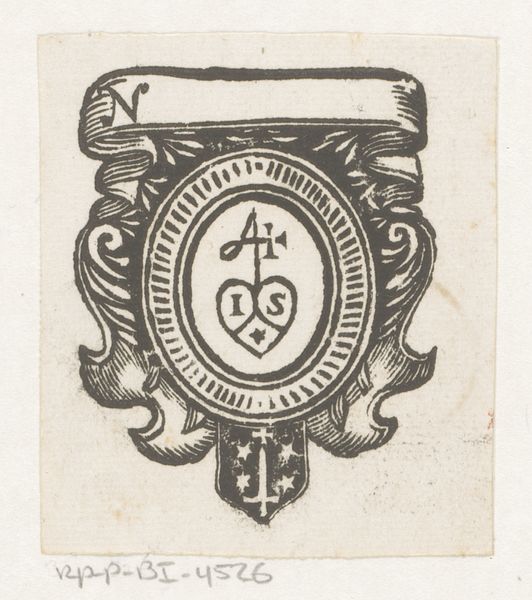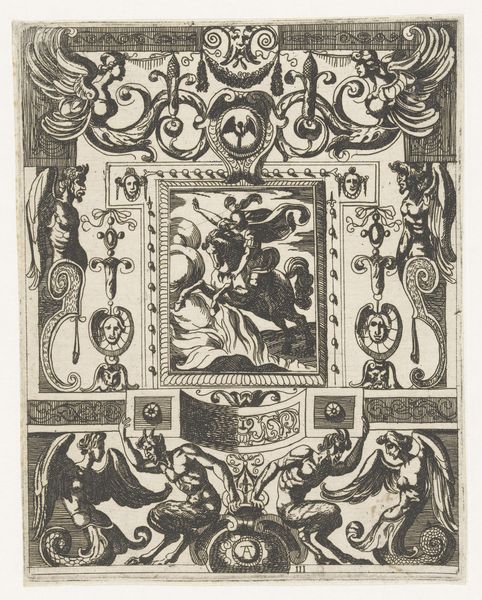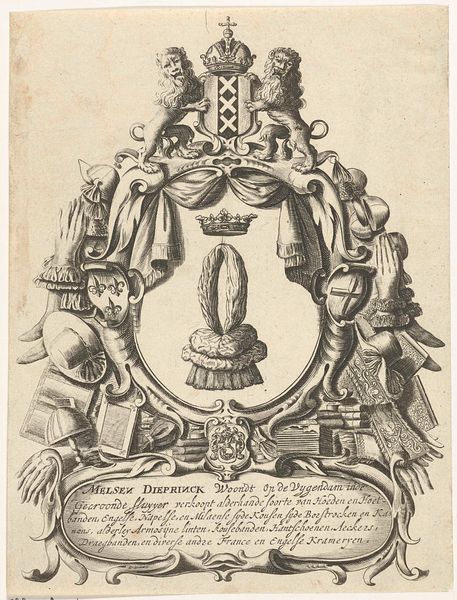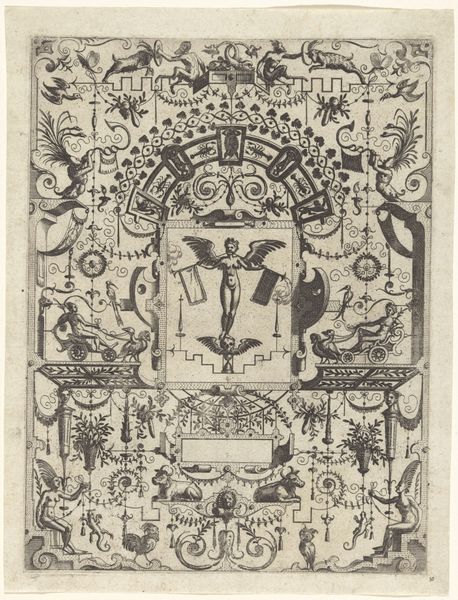
drawing, print, paper, ink, woodcut, engraving
#
portrait
#
drawing
#
byzantine-art
#
pen drawing
# print
#
paper
#
ink
#
woodcut
#
history-painting
#
northern-renaissance
#
engraving
#
miniature
Dimensions: height 177 mm, width 141 mm
Copyright: Rijks Museum: Open Domain
Curator: Let's turn our attention to a complex and fascinating piece from around 1500-1510, "Monogram of Christ," attributed to Albrecht Dürer, held here at the Rijksmuseum. It’s a work executed in pen and ink, specifically as a woodcut on paper. Editor: It strikes me as a world contained within a circle! Dark ink on the light paper emphasizes stark contrasts—it feels very immediate, almost like a miniature illuminated manuscript page, densely packed with miniature figures. Curator: That’s a perceptive observation. As a woodcut, this print served not as a singular, precious object but for wider distribution and personal devotional use, fitting into the artistic culture that included the proliferation of printed materials at the time. Its small scale certainly speaks to an accessible, portable form of faith. Editor: The central monogram “IHS,” referencing the name of Jesus, is rendered powerfully. Then the crucifixion scene is directly embedded within the letters "I" and "S." It feels very direct. And notice all the Hebrew script above the letters; its a unique feature. It ties this piece to a wider textual tradition and emphasizes the figure of Christ as "King of the Jews." Curator: Precisely. Its interesting that he, living in Germany, made this text so prominent, given some level of anti-Semitism that circulated during the early Renaissance. As the cultural perception shifted during the northern Renaissance, artists used classical motifs to validate their rulers as part of social and political discourse. Here, the religious imagery is employed as a social statement. Editor: The scenes along the circular frame enhance the theological layers even further, like reading visual glosses. I spot The Nativity on the left and the figure bringing instruments that reference musical Psalms on the right which underscore this symbolic framework. I also wonder at his choice to make a point that all the text should be in the original language with Christ on the cross at the same time. This seems a bit defiant. Curator: I agree. Dürer was definitely making a social and theological statement through the deployment of Christian religious art for distribution to a wider audience and doing it in such a theologically sensitive and nuanced way. This is certainly a striking visual object within the shifting socio-political-religious currents. Editor: It makes one contemplate how he was subtly negotiating historical narrative and religious doctrine at a key moment in Europe's transformation. Thank you, Durer.
Comments
No comments
Be the first to comment and join the conversation on the ultimate creative platform.
